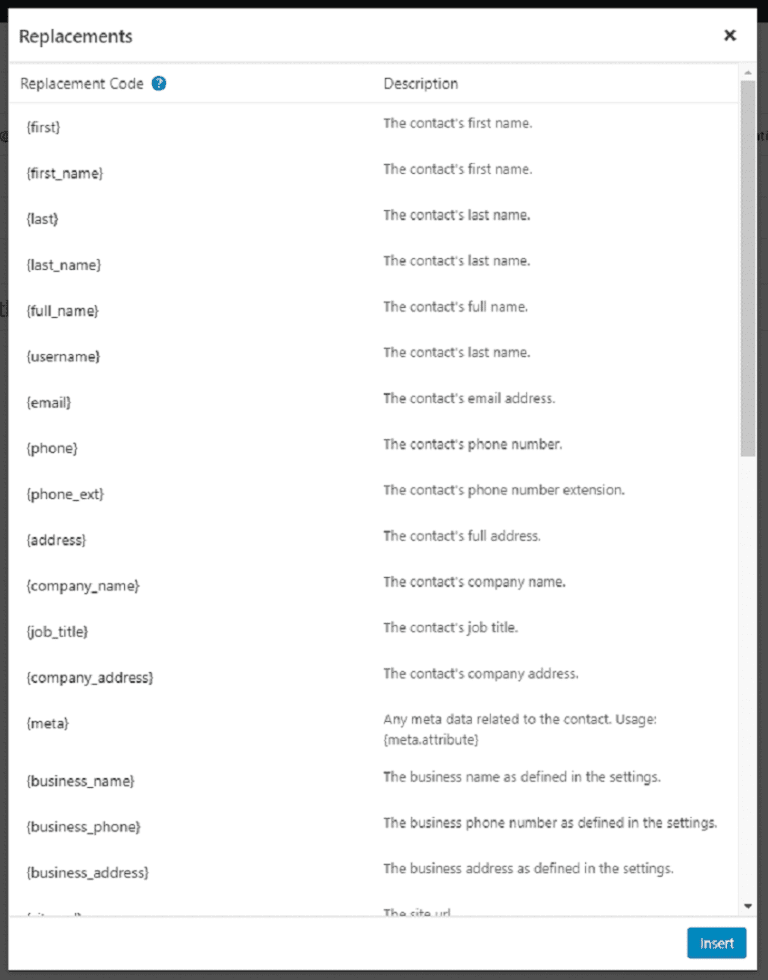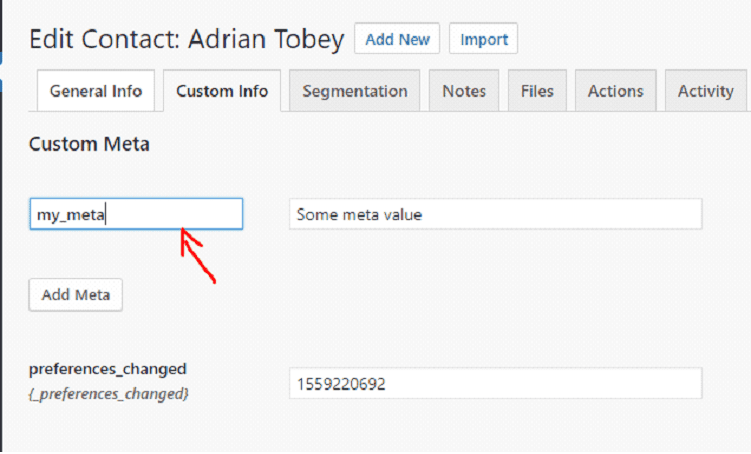You can personalize much of the customer experience by using replacement codes.
Where Do I Use Replacements?
Replacement codes merge in user data to whichever supported content you want, such as emails, notifications, text messages and more.
You can also use replacements in certain shortcodes!
Where Do I Find Replacements?
You can see a full list of replacement codes by clicking the ”Insert Replacements“ button wherever it can be found.
Some of the places that the “Insert Replacements” button can be found are in the e-mail editor and funnel editor.

You can select your code and then click Insert to paste it at the location of your cursor.
Meta Replacement Codes
This is a special syntax to merge in meta, and to all intents and purposes is the exact same as the {meta} code.
Use by prefixing any meta key with an underscore. For example {_street_address_1}
You can find the shorthand code for custom meta that you saved by viewing it in the contact record.

Replacement Codes With Arguments
Some codes require an argument to function. For example the {meta} and {date} codes.
You can specify an argument using a period .
For example. {date.Y-m-d|today} and {meta.lead_source}
The code description will tell you in the event an argument is required.
Replacement Codes Without Arguments
This is the majority of codes, simply copy and paste and you’re off to the races.
Replacement Code Defaults
To provide a default value for a replacement code that does not return anything, use the following syntax.
{replacement::deafult}
For example, to provide a default for the first name of a contact you can use {first::there} which will output ”there“ if the first name is not available.
You can also use this for custom meta replacements, for example, you can use {_my_custom_meta::custom_value} to output ”custom_value“ if the metadata is not available.


